The most notable weather patterns this week were some strong easterlies 17th-19th and another period of lighter south-easterlies 22-23rd. The 25th brought light north-easterly winds before they dropped to nothing for the afternoon. More typical autumnal sunshine and showers from south westerlies returned on the 26th.
The island has become a frenzy of hunting raptors this week with Merlin a constant presence. Up to five individuals counted, as well as an autumn high count of five Kestrel. Up to eight Peregrine Falcon were recorded this week, and a male Sparrowhawk has joined the long staying female with the two birds usually seen hunting along the east coast. A ringtail Hen Harrier was present on the 19th and up to two Short-eared Owl have been picked up 21st-25th. Our highlight of this week was undoubtedly a stunning juvenile Pallid Harrier on the 19th, the first record for Lundy. It was seen by many at locations across the length and breadth of the island. It was watched carrying away a Common Snipe and later roosted by Pondsbury, but unfortunately for us was observed leaving the island shortly after dawn on the 20th.
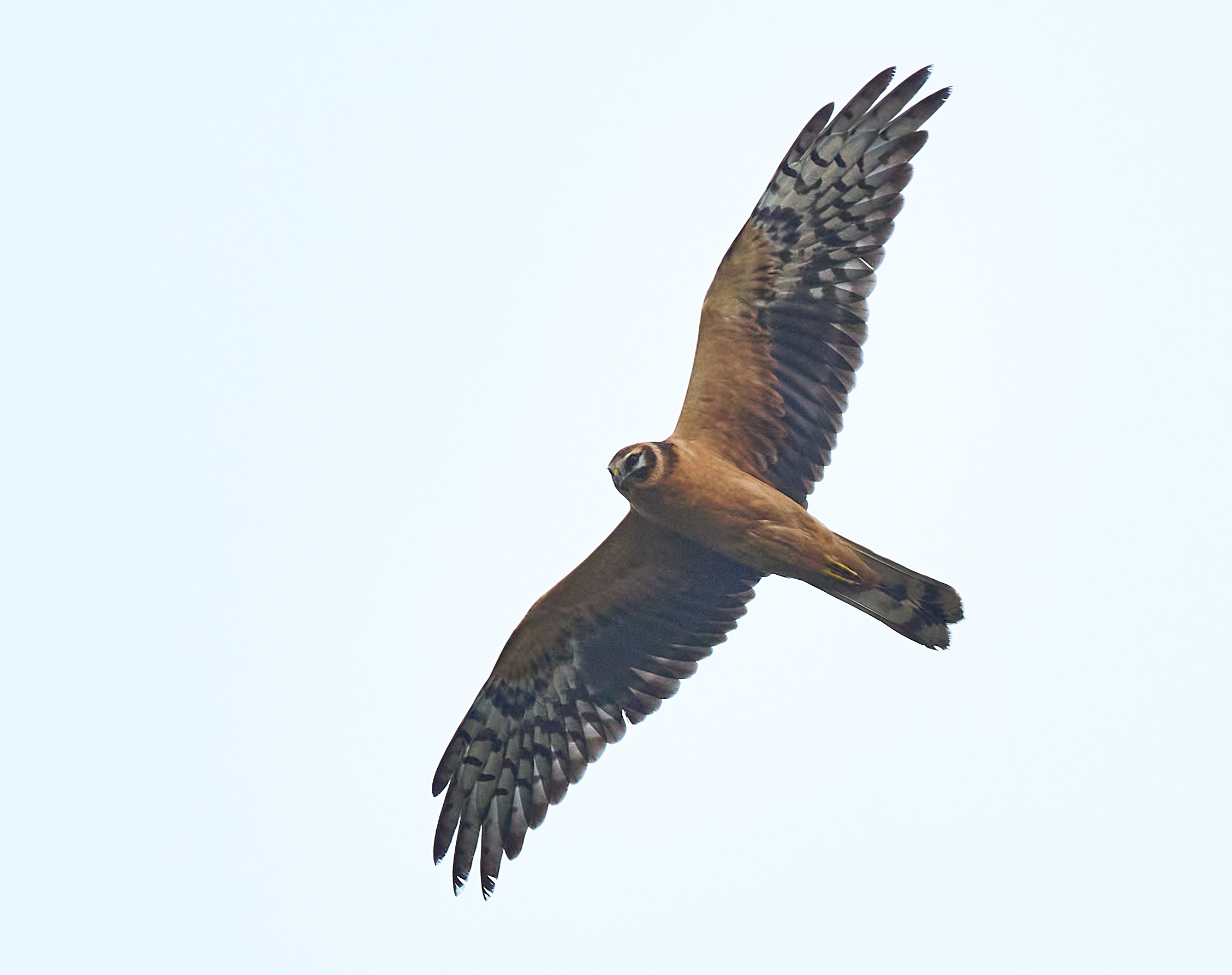 |
Juvenile Pallid Harrier © Eden Davies
|
 |
| Initial Views of juvenile Pallid Harrier over Quarries © Tim Jones |
 |
| Juvenile Pallid Harrier © Eden Davies |
A single first-winter male Wigeon was present on Barton Field on the 19th and then Pondsbury 20-21st. A few Teal arrived on the 18th with a high count of four. A female type Common Scoter was seen off of Benjamin's Chair on the 18th and then North Light on the 19th. Up to five Water Rail have been heard calling this week, all in Millcombe/St John's except for a bird below St Helen's Copse. Woodpigeon numbers have dropped from eight to zero, likely falling prey to the raptor influx, with at least one carcass found at the north end of the island.
 |
First-winter male Wigeon at Barton Field © Tim Jones
|
 |
| Common Scoter off of North Light on the 19th © Tim Jones |
A single Lapwing was seen on the 23rd with another single bird seen on the 25th around the Airfield. The last date Golden Plover were recorded was the 20th, with two birds heard calling. A single Dunlin was picked up around the island between 16th-20th, usually around the Airfield. The first Woodcock of autumn was ringed on a nocturnal survey on the 17th in south-west field with another two recorded on the 22nd and one bird flushed from Quarry Pond on the 26th. Jack Snipe have become fairly regularly recorded, with five ringed in the past week and a high count of seven on the 20th. Records of Common Snipe have decreased after the large influx in the middle of the month, with typically around eight birds recorded daily in this period. The Redshank continues its stay, although it was recaught on the 18th and worryingly had dropped from 150g to 120g. It has been seen feeding on worms since the 18th though and so is now finding more suitable places to feed than cattle grids and vehicle tracks!
 |
| Jack Snipe Barton Field © Luke Marriner |
A couple of Common Gull were sighted around the coastline with three below Quarry Beach on the 21st. A flock of 25 Herring Gull with a single Common Gull were loafing in the Landing Bay on the 25th, later seen flying in smaller parties around the north end. A good day count of 30 Lesser Black-backed Gull on the 23rd. A first-winter Yellow-Legged Gull was found feeding on a carcass of an Atlantic Blue-fin Tuna on the 17th, both good Lundy records. We also received a belated report of a fantastic observation this week – a single Chough was seen and heard north of Jenny's Cove by a visiting climber!
A Red-throated Diver was seen from the MS Oldenburg 10 minutes after it departed the Landing Bay on the 21st. A Great Northern Diver has been picked up almost daily since the 21st, feeding off of the Landing Bay. Typically around 40 Gannet are recorded off of the coastline daily. Several records of Cormorant this week, which is a fairly scarce visitor to the island. In this period three on the 19th, six on the 22nd, one on the 23rd and two on the 24th. Up to two Grey Heron have still been seen fishing around the coastline, which is presumably proving more fruitful than Pondsbury – many previous visiting herons have seemed strongly attached to the various small freshwater bodies across the island, often appearing to struggle to find sufficient food for maintaining condition. A small flock of three Grey Heron drifted over Tibbetts from the east on the 24th.
At least two Yellow-browed Warbler were found along the east coast on the afternoon of the 20th, with one bird continuing to the 26th, typically seen in Quarter Wall Copse. A Red-breasted Flycatcher also turned up at Quarter Wall Copse on the 20th, detected late in the day and not seen subsequently.
 |
| Yellow-Browed Warbler Quarter Wall Copse © Angus Croudace |
We've seen quite a few late records of some species passing through, likely due to the very mild autumn. It started to feel like September again when another Common Whitethroat, a striking male Common Redstart and a male Pied Flycatcher were picked up on the 22nd! A late Eurasian Reed Warbler was seen regularly in Millcombe 19th-23rd, moving between the back of Millcombe House and the Lower Garden. A single late Whinchat was at Quarter Wall on the 26th. A late Tree Pipit was seen on the deck by Quarry Cottages on the 19th and one was also heard in flight by two observers on the 20th heading north over the Terrace. On the same day a Richard's Pipit was heard and seen in flight leaving the island over the Castle.
 |
| A stunning male Common Redstart at Stoneycroft © Angus Croudace |
Typically around a hundred Meadow Pipit were recorded daily at the start of this period, moving over in small groups or individually, with a high count of 394 on the 22nd before numbers decreased more recently with 42 on the 25th and 29 on the 26th. Skylark passage continues with up to about 30 heading south most days although just three on the 26th. The 20th saw a few late hirundines moving through with 230 Swallow and 16 House Martin. Up to 30 Swallow are recorded on most other days although a complete absence on the 19th and 26th are an indication that their passage is petering out.
About 18 Chiffchaff daily 19th-22nd, dropping to 5 by the 26th. A small arrival of 22 Blackcap on the 22nd although these quickly moved through with just half a dozen remaining on the 26th. Firecrest continue to be seen almost daily, with a high count of five on the 20th, including one that was observed arriving 'in-off' in the company of 25 Goldcrest. There was another large influx of Goldcrest on the 22nd, with 112 recorded and 74 ringed in Millcombe in the morning. The second Treecreeper of the year was heard calling in the bottom of Millcombe on the 21st.
 |
| Firecrest ringed in Millcombe © Luke Marriner |
We had a noticeable arrival of migrant Robin on the 20th with a high day count of 39. Two Black Redstart were found on the west coast on the 23rd with one bird working its way from Old Light to the Lodge on the 25th. After a small hiatus in records a few Wheatear were sighted at the end of this period, with two daily since the 21st, and a high count of five on the 25th. Single Grey Wagtail over daily since the 22nd with three on the 23rd. Three sightings of White Wagtail on the 19th, 21st and 22nd.
 |
| Female type Black Redstart by Lambing Shed/Lodge © Angus Croudace |
As warbler and hirundine passage dwindles, the baton passes over to thrushes and finches. Autumn finch passage on Lundy is a spectacle to behold in the second half of October, with small flocks constantly streaming past the island on some days. Starling also move, with our typical early October counts of slightly over 100 birds joined transiently by flocks of migrants. Several hundred were recorded daily between 18th-26th with two high counts of 414 on the 20th and 478 on the 24th.
The 20th and 25th saw moderate thrush arrivals. Whilst most days have recorded at least one Ring Ouzel this week, we had a high count of 8 on the 20th and three on the 25th. 40 Fieldfare on the 20th and 51 on the 25th. There were 92 Redwing on the 20th with about 40 most other days, and they can occasionally be heard calling as they pass over at night too. Most notably on the 25th was a large arrival of Blackbird and Song Thrush with day counts of 39 for both species. Mistle Thrush are uncommon on Lundy in autumn and so it was nice to have one at the North End on the 23rd and at least one rattling around the top of Millcombe on the 25th.
 |
| Fieldfare Millcombe © Tim Jones |
After the first initial push of c1500 Chaffinch already reported on the 16th, we saw this scale up somewhat. A couple of hundred were recorded daily 17th-21st before 550 moved through on the 22nd, 4031 on 23rd and 3114 on 24th! The biggest push coincided with the south-easterlies, which is typical for Lundy. Chaffinch seem to prefer flying into a light to moderate headwind. Valuable ringing records have proven that some – perhaps most – birds passing through Lundy in autumn breed in Fennoscandia or even as far east as Russia. From these breeding grounds they migrate south-west along a relatively narrow corridor through Denmark, Germany and the low countries (in preference to crossing the North Sea) before either crossing the English Channel to the UK and Ireland, or continuing south-west into France and Iberia. The big flocks passing Lundy recently were perhaps readjusting their course to a more south-westerly course, having been pushed further north and west than intended by strong easterly/south-easterly winds.
Siskin scaled up proportionally, with around one hundred daily but 810 on 22nd, 1157 on 23rd and then a drop to 334 on 24th where they were significantly outnumbered by the Chaffinch. Among the finches a couple of Brambling have been picked out on most days, usually detected by their nasal, wheezing call. There was a good high count of 14 on the 23rd. A single Greenfinch was recorded on 17th, 22nd and 25th. Lesser Redpoll have been picked up typically as singles with a couple a day but high counts of five on the 23rd and eight on the 25th. Linnet numbers have dropped significantly from the 168 recorded in early October. We're now only reaching tallies of 20-40 birds recorded daily, with similar numbers of Goldfinch. These are typically in very small flocks with none of the large groupings seen earlier in the season.
A Lapland Bunting toured the island on the 20th-22nd as seen/heard by many observers. The second Snow Bunting of the autumn was elusive around Middle Park on the 23rd, having first been seen perched atop a prominent rock at Dead Cow Point, where it narrowly avoided the clutches of a Merlin! We're hoping that some more classically confiding individuals drop in before the season is out. Nice Reed Bunting passage has been recorded with between one and six birds daily, usually as singles calling overhead or dropping into favoured areas such as the willows below Government, and Pondsbury/Ackland's Moor/Quarter Wall.
 |
| Ringing station in Millcombe with (L-R) Luke Marriner, Joe Parker and Paul Morton © Tim Jones |




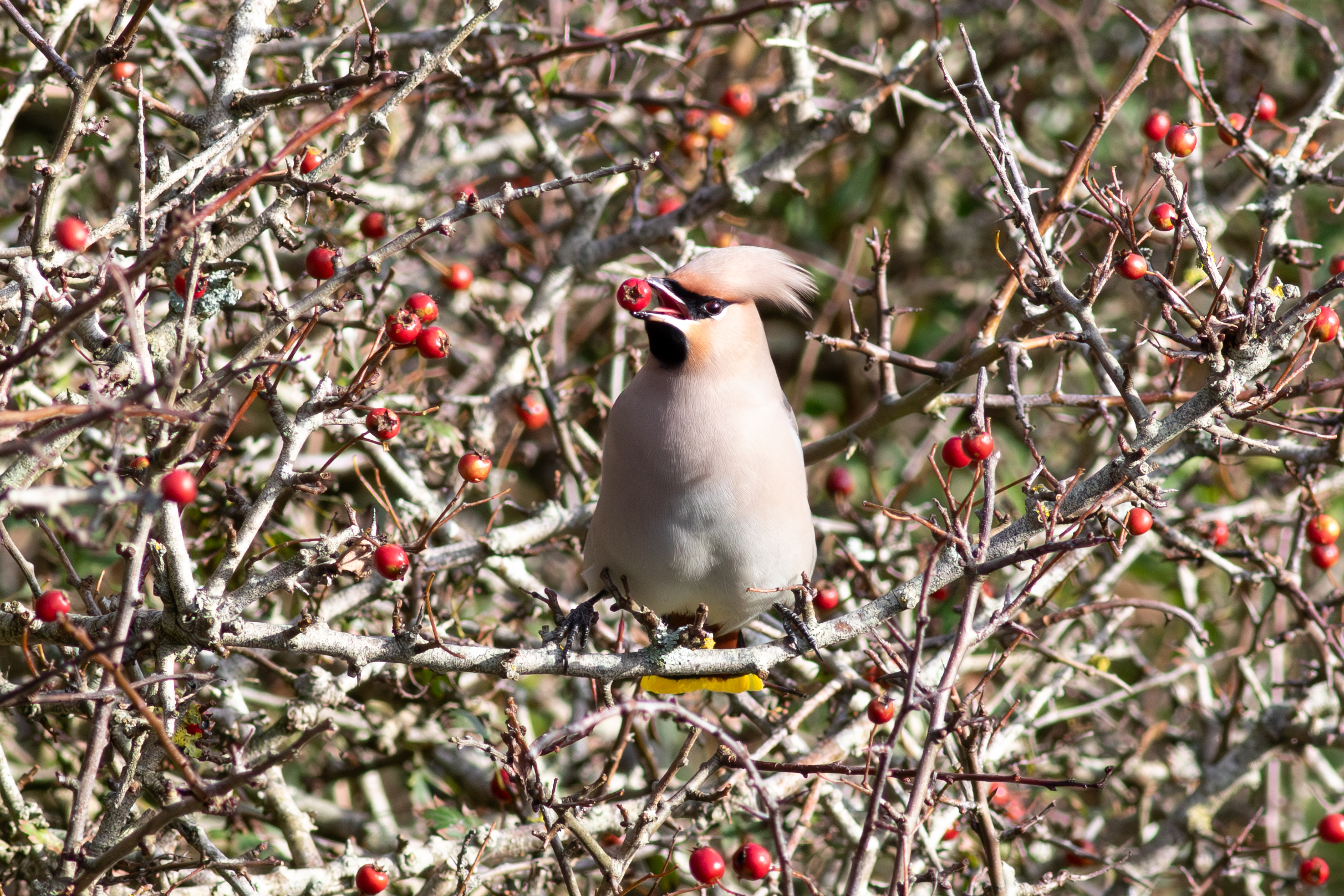
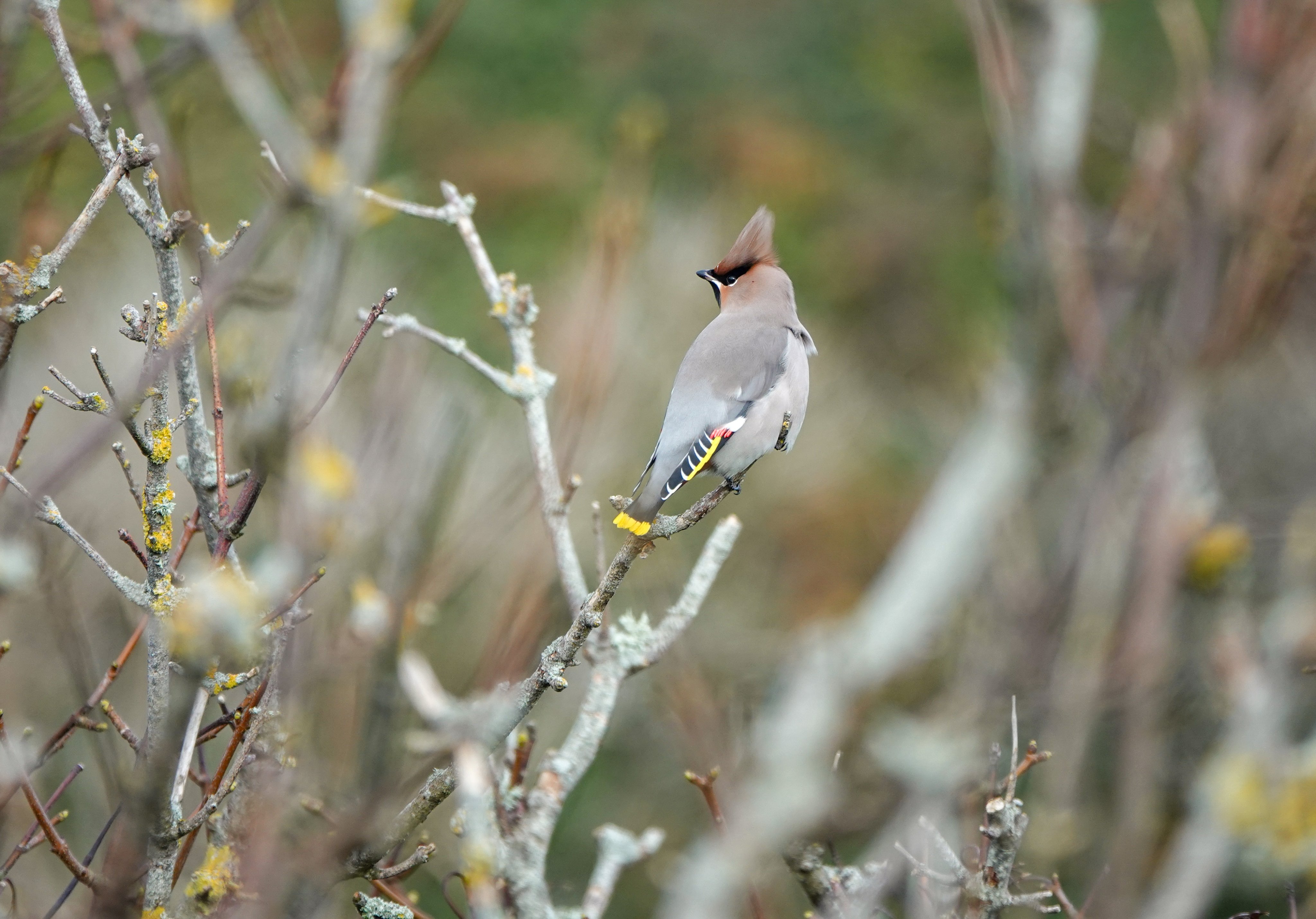




































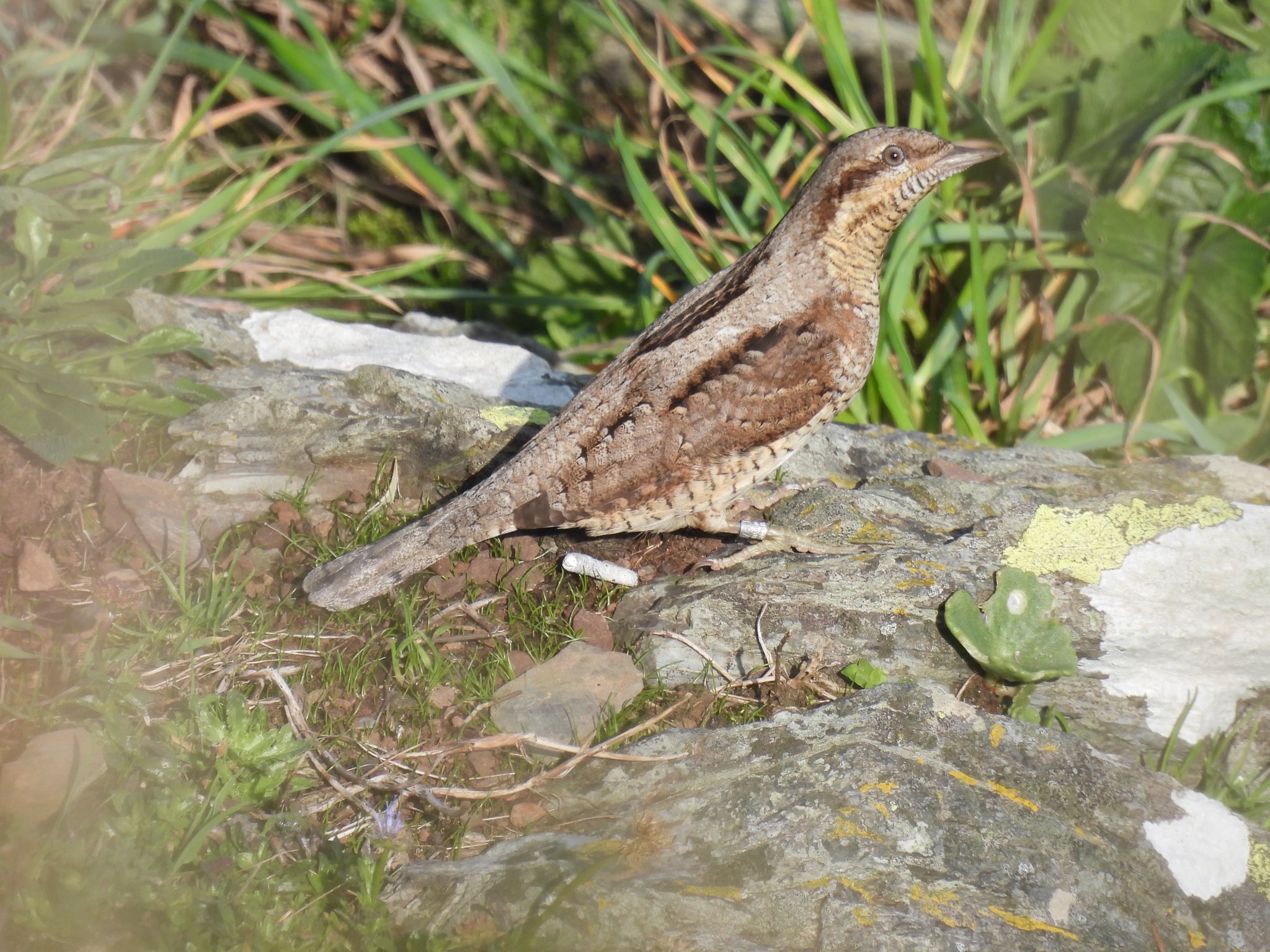


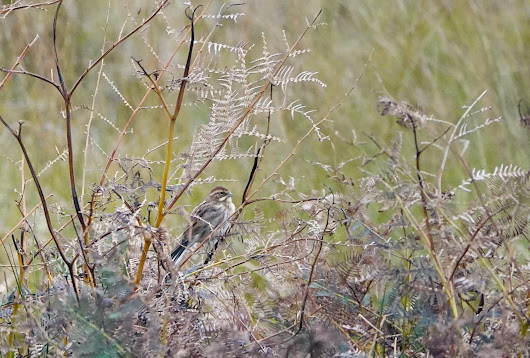




%20Large.jpg)

